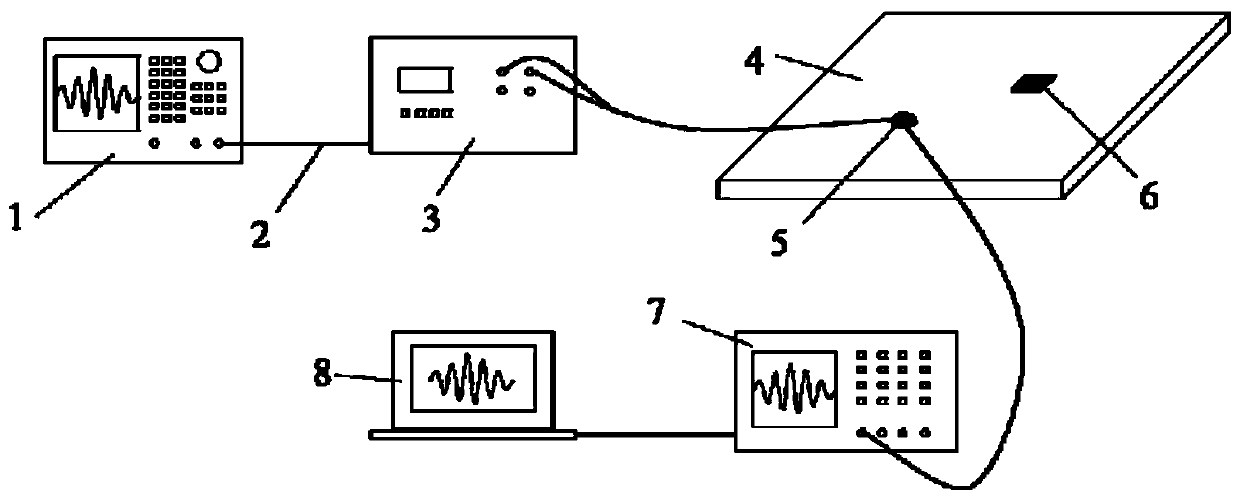Two-stage damage location recognition method based on guided-wave signal sparse decomposition and damage localization
A damage location and signal sparse technology, which is applied in the processing of detection response signals, the use of sound waves/ultrasonic waves/infrasonic waves to analyze solids, and the use of sound waves/ultrasonic waves/infrasonic waves for material analysis, etc., can solve the problem of inaccurate ultrasonic guided wave signal analysis results, The dictionary design method and signal sparse decomposition algorithm are not perfect enough to achieve the effect of reducing possibility and good robustness
- Summary
- Abstract
- Description
- Claims
- Application Information
AI Technical Summary
Problems solved by technology
Method used
Image
Examples
specific Embodiment approach 1
[0028] Specific implementation mode one: refer to Figure 2 to Figure 6 Specifically explaining this embodiment, a two-stage damage location identification method based on guided wave signal sparse decomposition and damage location described in this embodiment includes the following two stages:
[0029] The first stage:
[0030] Step 1: The ultrasonic transducer is excited in the waveguide to be tested to form a 0 and A 0 Modal Lamb wave, setting M collection points on the waveguide to be detected, and collecting the ultrasonic waveguide signal at each collection point;
[0031] Considering the mode conversion at the damage site, the following four Lamb wave packets may exist on the path from the damage to the collection point: the directly propagating S 0 and A 0 Modal, by S 0 converted from A 0 and by A 0 converted to S 0 Mode, considering the dispersion effect of the Lamb wave, the ultrasonic guided wave propagation model can be used to calculate the waveform after ...
PUM
 Login to View More
Login to View More Abstract
Description
Claims
Application Information
 Login to View More
Login to View More - R&D
- Intellectual Property
- Life Sciences
- Materials
- Tech Scout
- Unparalleled Data Quality
- Higher Quality Content
- 60% Fewer Hallucinations
Browse by: Latest US Patents, China's latest patents, Technical Efficacy Thesaurus, Application Domain, Technology Topic, Popular Technical Reports.
© 2025 PatSnap. All rights reserved.Legal|Privacy policy|Modern Slavery Act Transparency Statement|Sitemap|About US| Contact US: help@patsnap.com



